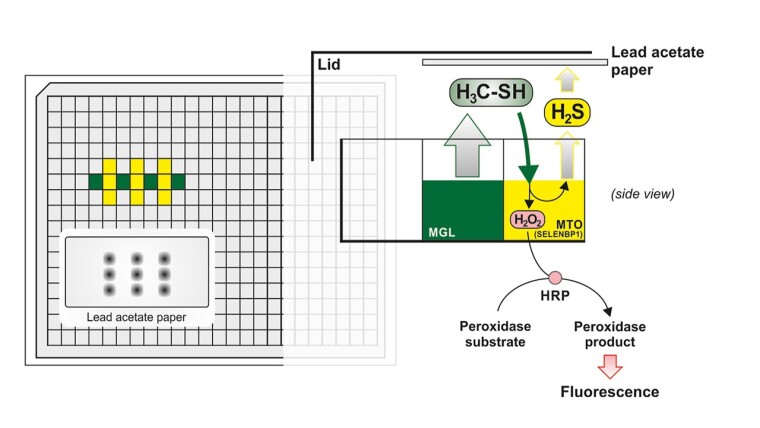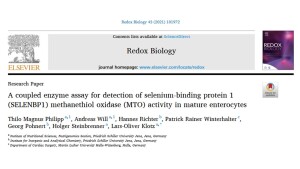
Philipp et al., 2021
Screenshot: Josephine PriebsAbstract
Methanethiol, a gas with the characteristic smell of rotten cabbage, is a product of microbial methionine degradation. In the human body, methanethiol originates primarily from bacteria residing in the lumen of the large intestine. Selenium-binding protein 1 (SELENBP1), a marker protein of mature enterocytes, has recently been identified as a methanethiol oxidase (MTO). It catalyzes the conversion of methanethiol to hydrogen sulfide (H2S), hydrogen peroxide (H2O2) and formaldehyde. Here, human Caco-2 intestinal epithelial cells were subjected to enterocyte-like differentiation, followed by analysis of SELENBP1 levels and MTO activity. To that end, we established a novel coupled assay to assess MTO activity mimicking the proximity of microbiome and intestinal epithelial cells in vivo. The assay is based on in situ-generation of methanethiol as catalyzed by a bacterial recombinant l-methionine gamma-lyase (MGL), followed by detection of H2S and H2O2. Applying this assay, we verified the loss and impairment of MTO function in SELENBP1 variants (His329Tyr; Gly225Trp) previously identified in individuals with familial extraoral halitosis. MTO activity was strongly enhanced in Caco-2 cells upon enterocyte differentiation, in parallel with increased SELENBP1 levels. This suggests that mature enterocytes located at the tip of colonic crypts are capable of eliminating microbiome-derived methanethiol. Philipp et al., 2021Externer Link
